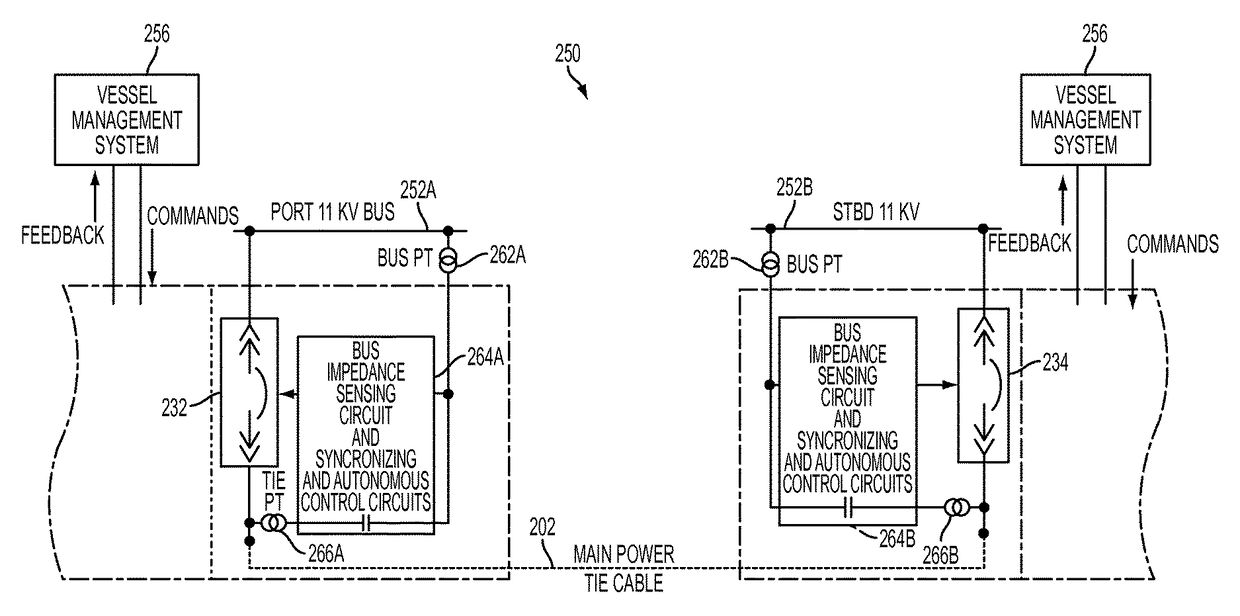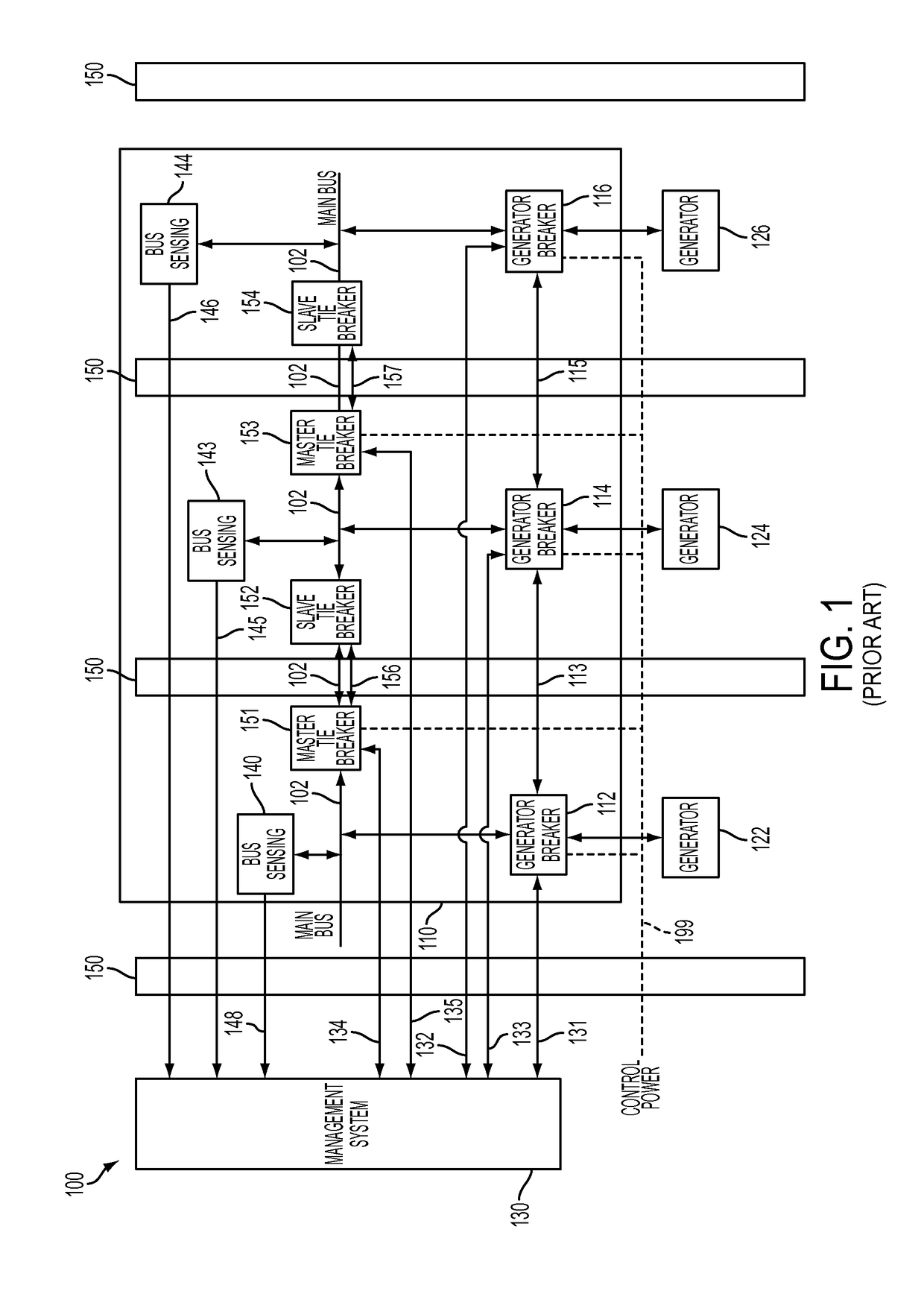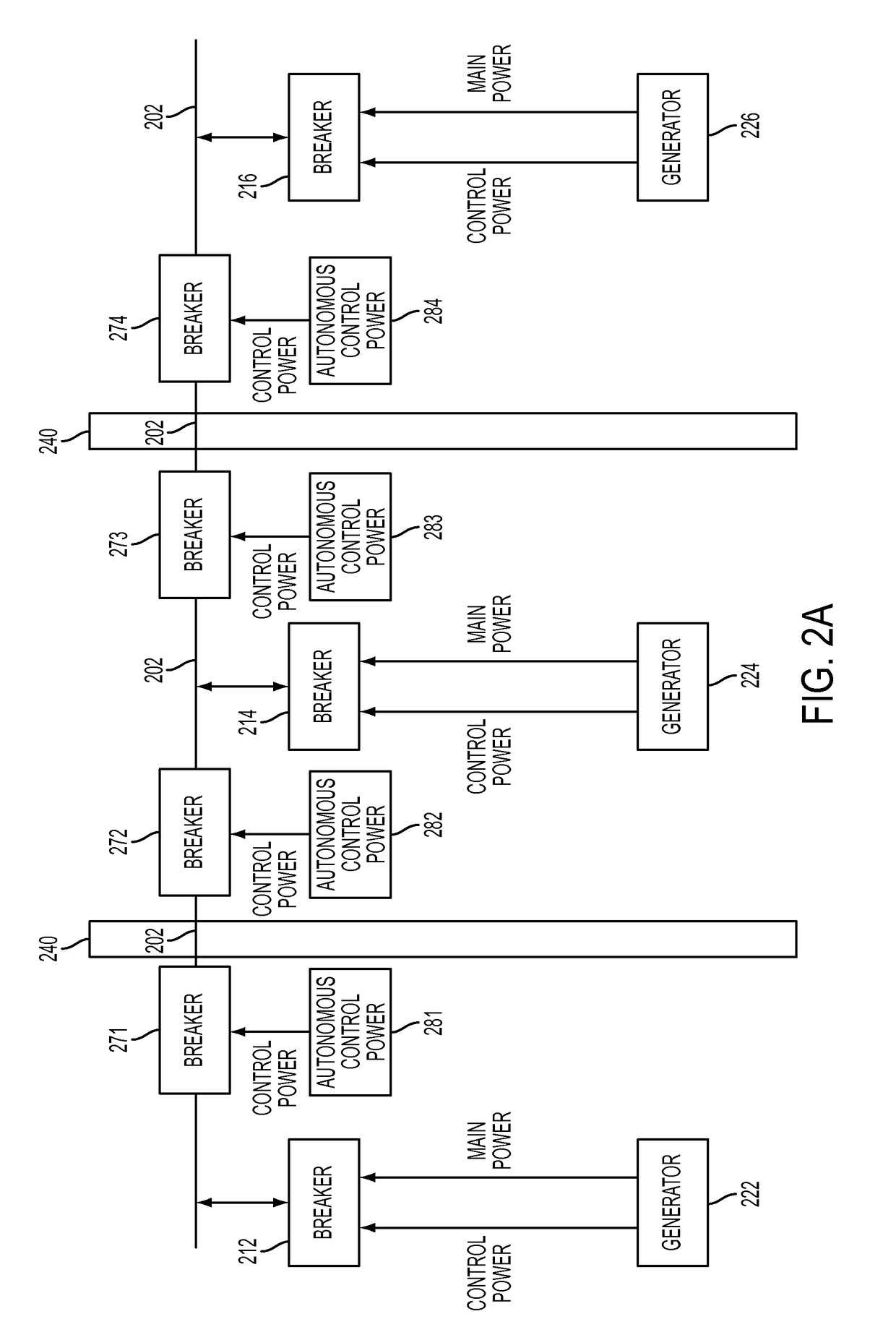Breaker design for power system resiliency
a technology for power systems and breakers, applied in the direction of electrical equipment, arrangements resposes to fault current, impedence measurement, etc., can solve the problems of all breakers operating erroneously, reduce or eliminate the reliance of each breaker on other breakers, and improve the resiliency of a power system.
- Summary
- Abstract
- Description
- Claims
- Application Information
AI Technical Summary
Benefits of technology
Problems solved by technology
Method used
Image
Examples
embodiment 400
[0060]FIG. 4 shows an embodiment 400 of a breaker 410 with autonomous behavior. The breaker 410 can be used to determine when to close a contactor 412, and therefore couple a main power distribution bus 402 to a generator bus 404. In one embodiment, a breaker can be a Siemens NXPLUS-C Medium Voltage breaker section rated at 2000A. A breaker 410 can be equipped with voltage inputs 411, 413 coupled to the main bus 402 and the generator bus 404, respectively, through potential transformers 416, 418, respectively. The potential transformers 416, 418 can be coupled to the controller 414 and used to sense a bus voltage of the main bus 402 and the generator bus 404, respectively. The controller 414 can control the potential transformers 416, 418 to obtain a voltage measurement of the main bus 402 or the generator bus 404. For example, the controller 414 can process the voltage measurements and communicate via a communication link 415 to the contactor 412. The controller 414 can also be con...
embodiment 500
[0063]FIG. 5 shows an embodiment 500 of a breaker 510. The breaker 510 can include a breaker 512 coupled to a main bus 502 on one end and to a generator bus 504 on another end. In an embodiment, the breaker 510 can be used to determine when to close a breaker 512 to couple the main bus 502 and the generator bus 504.
[0064]In an embodiment, the breaker 510 can have a potential transformer 516 coupled between the main bus 502 and the control circuit 540. Another potential transformer 518 can be coupled between the generator bus 504 and the control circuit 540. The inner circuitry of the control circuit 540 can include a controller 563. The potential transformers 516, 518 can provide protection to the control circuit 540 from the buses 502, 504 by presenting a high impedance to the buses 502, 504, and therefore attenuating any high energy fault that can occur on the buses 502, 504. The breaker 510 can direct a collision through the high impedance potential transformers 516, 518 rather t...
embodiment 600
[0071]The breaker 510 can also include an operator interface 530 in an embodiment. The operator interface can include an output device, such as a monitor display, and an input device, such as a keyboard, to allow an administrator to monitor and control a power system. FIG. 6 shows an embodiment 600 of the operator interface 530 of FIG. 5. The operator interface 610 can include a sync mode selection switch 611. The sync mode selection switch 611 can allow the breaker to toggle between being operated remotely or locally and also between being operated automatically or manually. Furthermore, the breaker can have a network interface coupled to the controller, in which the controller is further configured to allow remote access to the operator interface. The network interface can include a connection to a propriety bus or signaling system or a connection to a public network, such as the Internet.
[0072]In an embodiment, the operator interface 610 within the breaker can also include a sync...
PUM
 Login to View More
Login to View More Abstract
Description
Claims
Application Information
 Login to View More
Login to View More - R&D
- Intellectual Property
- Life Sciences
- Materials
- Tech Scout
- Unparalleled Data Quality
- Higher Quality Content
- 60% Fewer Hallucinations
Browse by: Latest US Patents, China's latest patents, Technical Efficacy Thesaurus, Application Domain, Technology Topic, Popular Technical Reports.
© 2025 PatSnap. All rights reserved.Legal|Privacy policy|Modern Slavery Act Transparency Statement|Sitemap|About US| Contact US: help@patsnap.com



